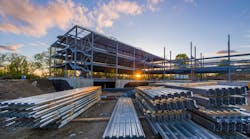FMI has released the 2014 Third Quarter Nonresidential Construction Index report. The NRCI shows a decrease of 3.3 points from Q2, but is still above the same time period in 2013. The cost of materials and labor continues to climb weighing negatively on the index.
Other factors keeping the NRCI from rising are government entities continuing to reduce spending and avoid making final decisions on the highway bills, as well as private investors taking a passive role waiting for others to act first.
The good news is that the economy has passed the “survival” stage and currently occupies the “thriving” phase. Backlogs remain strong with expectations of improvement and productivity up slightly. Thriving in the new economic climate will require companies to not just be the strongest or biggest, but also the most adept at dealing with change.
View the report via this link: Third Quarter Nonresidential Construction Index



